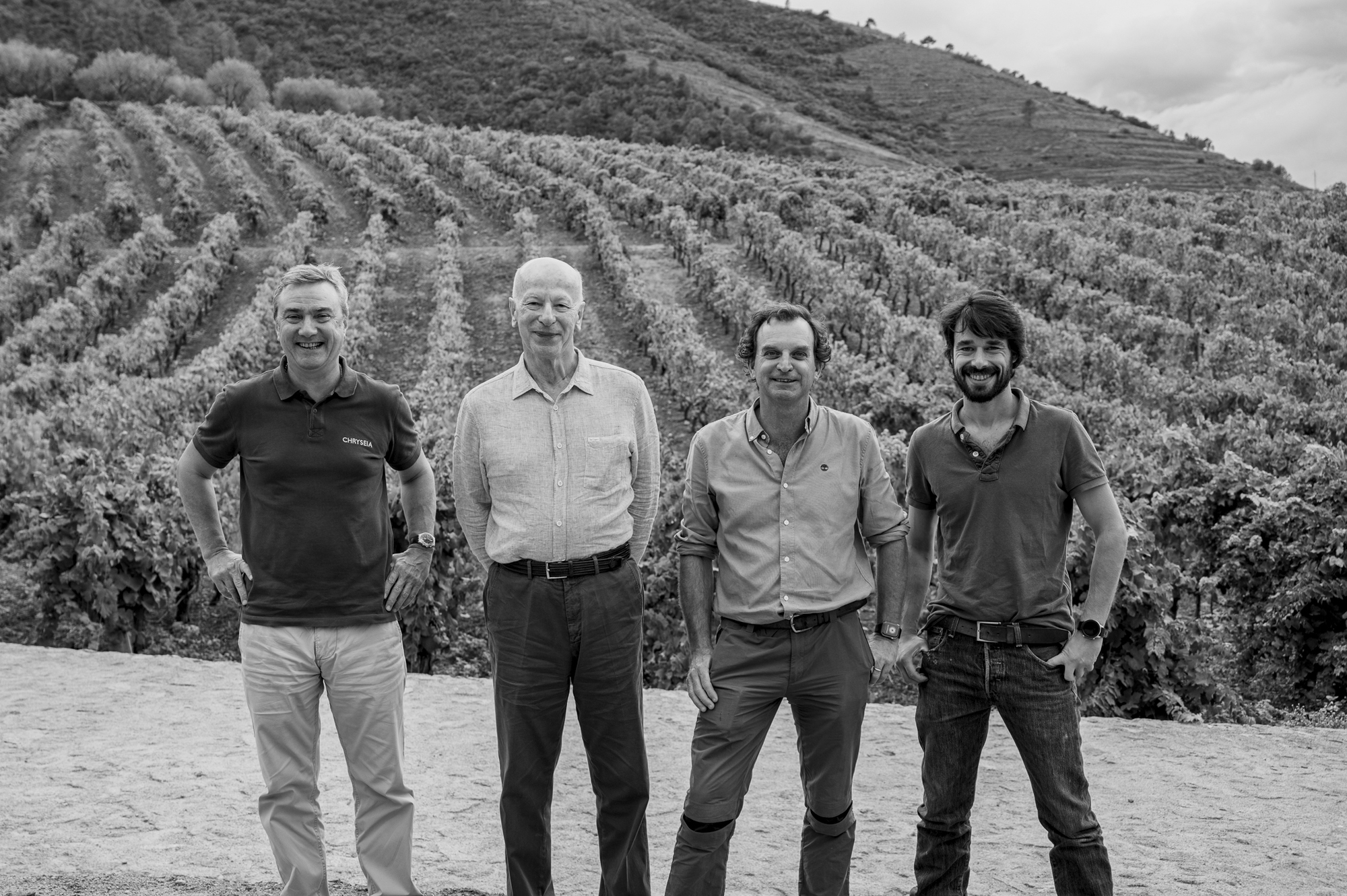

Winemaking

Harvesting
Each block of vineyard is handpicked at the optimum level of maturity to preserve the freshness of the fruit and the right sugar-acid balance. Given that the Touriga Franca takes longer to ripen than the Touriga Nacional, our harvest typically lasts between three and four weeks while we assess the maturity of each vineyard block.
The grape bunches arrive at the winery in small boxes which are immediately placed into one of our three temperature-controlled rooms until they reach 15 degrees.
Fermenting
The grape bunches pass through a two-stage screening and selection process. First, they are hand sorted on a triage conveyor where any damaged or unevenly ripe clusters are rejected.
The chosen bunches are then destemmed in a sophisticated pendulum swing destemmer which selectively detaches only healthy berries from the stems, keeping them whole and leaving any unwanted, raisined fruit on the stems. The remaining berries are then machine-sorted using a horizontal blade of compressed air that eliminates any dehydrated berries or other unwanted material.

The twice-sorted berries are then gravity-fed through rollers to be gently crushed. Each of our vats has a capacity of just 8,000kg of grapes, which allows a very precise selection of grape variety, age of vine, and exposure on the slopes.
The new winery at Quinta de Roriz, inaugurated for the 2021 harvest, has specially designed ‘reverse conical’ stainless steel vats. This creates a larger surface area of contact between the juice and the cap and, at run off, a slight compression of the cap which is less aggressive than a press.
The alcoholic fermentation is followed by a long maceration of up to 20 days to allow the tannins to become softer and rounder. The malolactic fermentation takes place in vats or in barrels depending on the length of the maceration.
"Since we formed the Prats + Symington partnership in 1999, our Chryseia project has exceeded our very highest expectations."
Bruno Prats
Blending
The art of blending is key to producing great port and Bordeaux wines. Both of our families have multi-generational experience in blending components from different plots of vineyard to create balanced and harmonious wines.
At the end of each harvest, we have an average of 25 separate lots. We taste these individually and this allows us to determine the best proportions of each variety for that year’s Chryseia.
While the proportions vary from year to year, Chryseia is generally an equal blend of Touriga Nacional and Touriga Franca as the two varieties complement each other beautifully. The lots that are not selected for Chryseia (largely because they have less ageing potential) are used to produce Post Scriptum.


Ageing
Chryseia spends between 12 and 14 months ageing in oak barrels in the cellars at Quinta de Roriz. The French oak barrels are sourced annually from one of the top coopers in France – a privileged connection made through the Prats family.
To prevent an excess of woody flavours that could compromise the aromatic finesse of the wine, we only use 400 litre barrels. This reduces the surface of wood contact per litre of wine.
Post Scriptum and Prazo de Roriz are matured in the second year barrels after Chryseia.
Our Team
The Quinta de Roriz vineyards and winery are managed by winemaker Miguel Bessa (far right). Bruno Prats (second from left) and Charles Symington (second from right) are responsible for producing the final blends of Chryseia. Pedro Correia (far left) supports the production of Prats + Symington wines as Head Douro DOC Winemaker at Symington Family Estates.




Chryseia, Post Scriptum de Chryseia, Prazo de Roriz Chryseia, Other wines